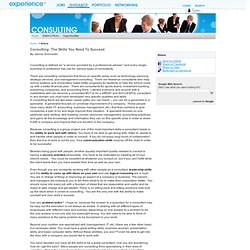

SIPOC Diagram. Kerri Simon February 26, 2010 Many recent inquiries and discussions have focused on the SIPOC diagram – a tool used in the Six Sigma methodology.

Because of the interest level, a further explanation is presented here along with a sample and template for your use. A SIPOC diagram is a tool used by a team to identify all relevant elements of a process improvement project before work begins. It helps define a complex project that may not be well scoped, and is typically employed at the Measure phase of the Six Sigma DMAIC (Define, Measure, Analyze, Improve, Control) methodology. It is similar and related to process mapping and ‘in/out of scope’ tools, but provides additional detail.
The tool name prompts the team to consider the suppliers (the ‘s’ in SIPOC) of your process, the inputs (the ‘i’) to the process, the process (the ‘p’) your team is improving, the outputs (the ‘o’) of the process, and the customers (the ‘c’) that receive the process outputs. Who supplies inputs to the process? 1. Six Sigma For Dummies Cheat Sheet. Cheat Sheet To apply Six Sigma to your business and produce the best results, you need to understand what Six Sigma is, the principles of Six Sigma, and the DMAIC problem-solving method.

The correct tools and use of the Six Sigma scale and methods will keep your data dependable and reusable. What Is Six Sigma? Generally, Six Sigma is a problem-solving methodology that helps enhance business and organizational operations. It can also be defined in a number of other ways: A quality level of 3.4 defects per million opportunities A rate of improvement of 70 percent or better A data-driven, problem-solving methodology of Define-Measure-Analyze-Improve-Control An initiative taken on by organizations to create bottom-line breakthrough change Six Sigma Principles Six Sigma is based on a handful of basic principles, and these principles create the entire Six Sigma arrangement.
Y=f(X) + ε: All outcomes and results (theY) are determined by inputs (theXs) with some degree of uncertainty (å). Hiring Stronger People Starts By How You Define Stronger People. Consulting: The Skills You Need to Succeed - Experience.com. There are consulting companies that focus on specific areas such as technology planning, strategic services, and management consulting.

There are freelance consultants who help school systems and universities make better programs for students or help the school come up with a better financial plan. There are consultants for sports teams, investment banking, publishing companies, and accounting firms. Literally everyone and anyone with a marketable skill can become a consultant BUT to be a GREAT and SUCCESFUL consultant in any domain you must have developed very specific qualities and skills. In consulting there are two basic career paths you can travel -- you can be a generalist or a specialist. A generalist focuses on universal improvement of a company. Because consulting is a group project one of the most important skills a consultant needs is the ability to work well with others. Can you problem-solve? As in all professions, networking and having a strong online presence is key. The McKinsey 7S Framework - Strategy Skills Training from MindTools. Ensuring That All Parts of Your Organization Work in Harmony Learn how to use the 7-S Framework, with James Manktelow & Amy Carlson.

How do you go about analyzing how well your organization is positioned to achieve its intended objective? This is a question that has been asked for many years, and there are many different answers. Some approaches look at internal factors, others look at external ones, some combine these perspectives, and others look for congruence between various aspects of the organization being studied. Ultimately, the issue comes down to which factors to study. While some models of organizational effectiveness go in and out of fashion, one that has persisted is the McKinsey 7-S framework.
The 7-S model can be used in a wide variety of situations where an alignment perspective is useful, for example, to help you: The McKinsey 7-S model can be applied to elements of a team or a project as well. 3 Powerful Skills You Must Have to Succeed in Sales.